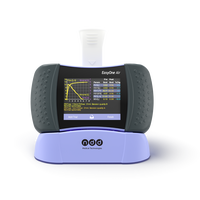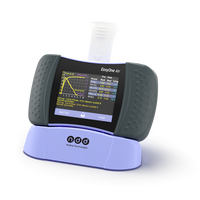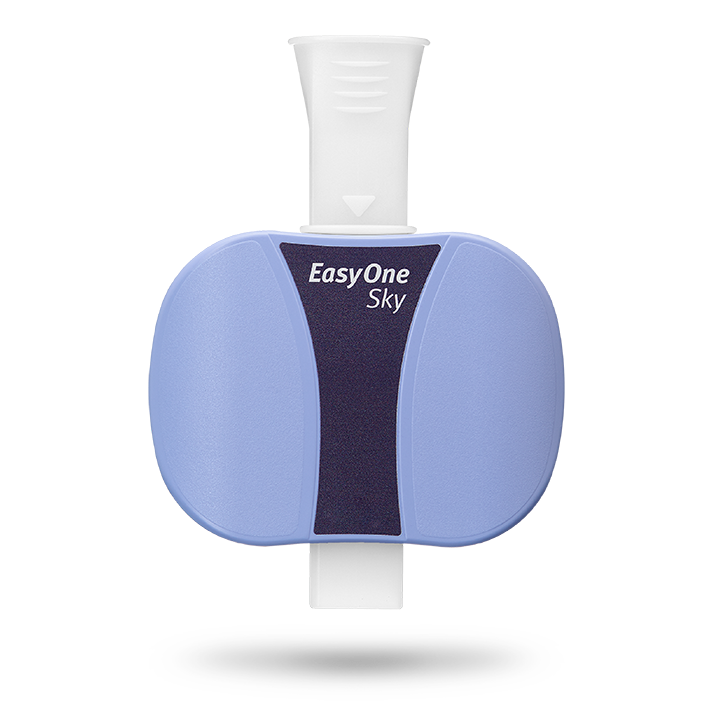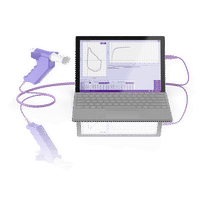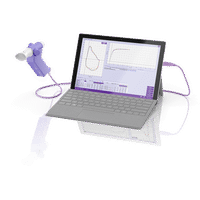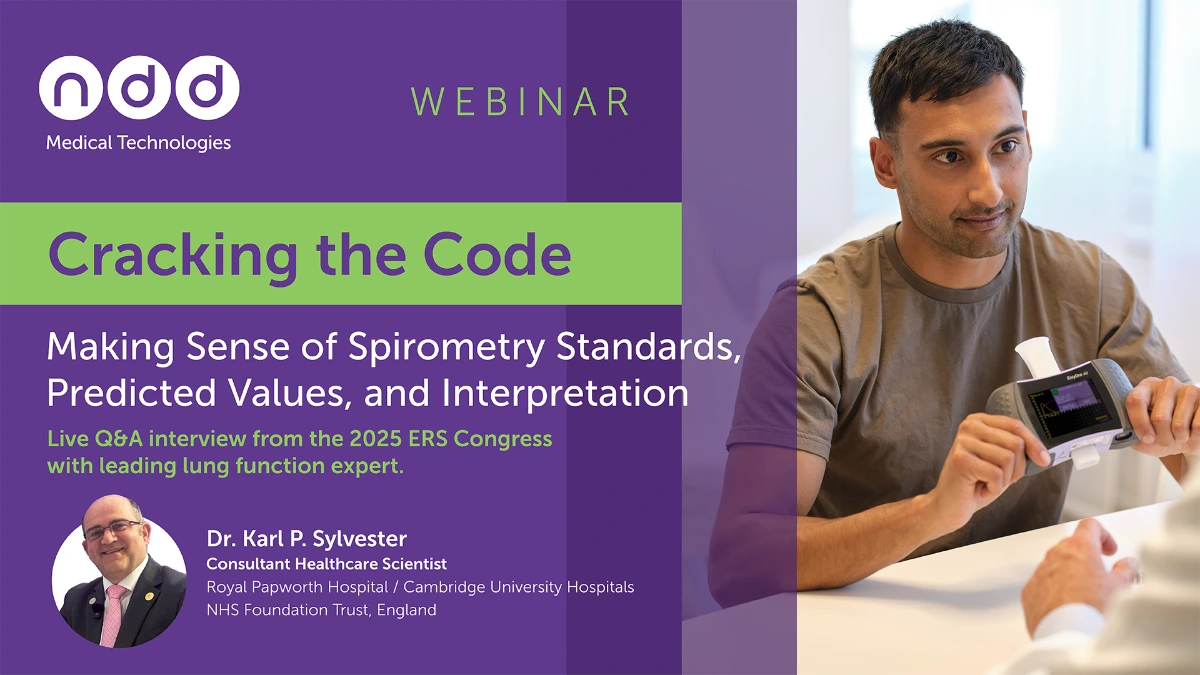Unlocking the value of spirometry in healthcare systems

Asthma and chronic obstructive pulmonary disease (COPD) are indiscriminate, common, and costly health conditions. But they can be managed with the right care. That starts with one of the most common pulmonary function tests: spirometry.
Asthma and COPD collectively affect more than 40 million Americans.1 Together, these conditions cost more than $100 billion in direct and indirect healthcare costs annually.1 Both also require spirometry to officially confirm a diagnosis.
Inevitably, integrated delivery networks (IDNs) and healthcare systems treat people with chronic respiratory diseases. IDNs healthcare systems operate in a complicated value-based care environment and are tasked with delivering care to diverse populations. These healthcare systems must balance costs while also ensuring good patient outcomes.
Not only are asthma and COPD extremely common in the United States, they’re also often misdiagnosed when spirometry is not used, with up to 33% of asthma diagnoses and up to 62% of COPD diagnoses classified as misdiagnoses.2 3Early detection of asthma and COPD using spirometry can reduce misdiagnoses.
Exacerbations are a major driver of poor outcomes in both asthma and COPD, leading to increased hospitalizations and readmissions, accelerated disease progression, and poorer long-term outcomes.3 Thankfully, some exacerbations can be prevented with sufficient care, and early diagnoses reduce the rate of exacerbations.
But spirometry is not just a tool that is useful for diagnosing these conditions. Spirometry is also necessary for monitoring and managing both conditions. GOLD, the Global Initiative for Chronic Obstructive Lung Disease, and GINA, the Global Initiative for Asthma, the leading clinical guidance organizations for the diseases, recommend regular spirometry for monitoring disease progression, assessing response to medication, and as prognostic indicators.45
Altogether, spirometry is a tool that can save time and costs (and generate revenue!) and, most importantly, improve outcomes. Spirometry offers immense value and IDNs and patients stand to benefit. Let’s discuss each in deeper detail.
Time savings with spirometry #
Incorporating spirometry into practice does not necessarily mean a lot of overhead and time for training staff. EasyOne devices are portable and reliable, and training staff to use these devices is quite easy and low maintenance. Incorporating spirometry can in fact mean time savings.
Point-of-care testing at primary care clinics enables earlier and easier diagnosis for patients by reducing the need to refer to a specialist for initial assessment and ensuring that patients, especially symptomatic patients at risk of further progression, get a diagnosis early in their disease journey.6 It can also reduce administrative overhead and the need for excess follow-ups and coordination between clinics.6
Additionally, EasyOne devices are highly reliable and do not require calibration, further easing the burden on the clinic and patients by reducing the need for retests.
Seamless EMR integration #
IDNs are in the business of population health management, underscoring the need for efficiency across practices while also ensuring interoperability.
With ndd’s EasyOne Connect and EasyOne Mobile application with nddcloud, patient results are seamlessly integrated to the clinic’s electronic medical record (EMR) system, enabling a high degree of trust and confidence in the results and eliminating possible manual entry errors. Seamless EMR integration ensures that providers across the care continuum can rely on trustworthy results, regardless of where the patient performed spirometry.
Standardized integration can also assist and strengthen population health management initiatives by streamlining care across different practices in the system.
EasyOne spirometry machines - tailored solutions for every practice.
Explore our spirometry machines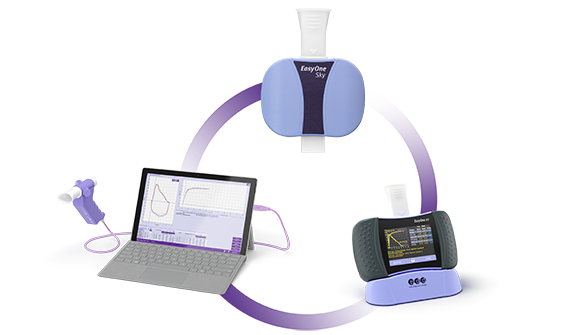
Cost savings with spirometry #
In addition to saving time, spirometry can also save clinics and healthcare systems money by reducing costs. When not managed well or diagnosed late (or not diagnosed at all), people with COPD and asthma go to the emergency room more often and require more frequent admissions into the hospital. These costs are exorbitant: The average annual cost associated is $28k per person with COPD and $8k per person with asthma. In addition, poorly controlled/managed COPD also drives non-COPD hospitalizations.7
Readmissions in particular significantly contribute to higher healthcare costs, resource constraints, and patient mortality.8 Nearly 20% of people with COPD are readmitted within 30 days for any reason.
Spirometry can lead to better outcomes in the form of early diagnosis and better management of respiratory disease, leading to lower unnecessary and preventable healthcare utilization, translating to cost savings for healthcare systems.
Use our PFT reimbursement calculator to see how spirometry can boost your revenue.
Discover the value of spirometry
Grow revenue & ROI with spirometry #
Spirometry in value-based care offers a lot of promising possibilities through cost and time savings but also as an additional revenue source through new billing opportunities.
Since spirometry is recommended to be more commonly used in primary care and broader practice settings, incorporating the test can be bundled with chronic care management and annual wellness visits. The test is also billable at the point of care.
Let’s think through the numbers for just a second: Consider a primary care clinic in the US that performs 20 tests per week using billing code CPT 94060, which has a reimbursement rate of $41 per test. Over the course of a year, that’s over $40,000 in revenue!
[Disclaimer: These reimbursements are based on United States Medicare Average as of January 2025. Subject to change at any time.]
Conclusion #
Chronic pulmonary diseases are prevalent and significant drivers of mortality and healthcare costs. Improving outcomes for people with asthma and COPD is of utmost importance. Healthcare systems are uniquely positioned to address this issue by leveraging spirometry more broadly to improve diagnostic rates, reduce hospital admissions, and improve overall patient outcomes, all while also generating sustainable revenue, streamlining care, saving costs, and saving time. Spirometry in healthcare systems is value-driven investment.
IDNs and healthcare systems should view spirometry a strategic tool for improving patients outcomes while also adding a revenue source.
Zeller TA, Beben K, Walker S. Distinguishing Asthma and COPD in Primary Care: A Case-based Approach. Am Fam Physician. 2023;107(3):247-252. ↩︎ ↩︎
Jørgensen IF, Brunak S. Time-ordered comorbidity correlations identify patients at risk of mis- and overdiagnosis. Npj Digit Med. 2021;4(1):12. doi:10.1038/s41746-021-00382-y ↩︎
Decramer M, Janssens W, Miravitlles M. Chronic obstructive pulmonary disease. Lancet Lond Engl. 2012;379(9823):1341-1351. doi:10.1016/S0140-6736(11)60968-9 ↩︎ ↩︎
2024 GOLD Report. Global Initiative for Chronic Obstructive Lung Disease - GOLD. https://goldcopd.org/2024-gold-report/ ↩︎
Global Initiative for Asthma. Global Strategy for Asthma Management and Prevention (2024 Report). https://ginasthma.org/reports/ ↩︎
Coates AL, Tamari IE, Graham BL. Role of spirometry in primary care. Can Fam Physician. 2014;60(12):1069-1070. ↩︎ ↩︎
Iheanacho I, Zhang S, King D, Rizzo M, Ismaila AS. Economic Burden of Chronic Obstructive Pulmonary Disease (COPD): A Systematic Literature Review. Int J Chron Obstruct Pulmon Dis. 2020;15:439-460. doi:10.2147/COPD.S234942 ↩︎
Shah T, Press VG, Huisingh-Scheetz M, White SR. COPD Readmissions: Addressing COPD in the Era of Value-based Health Care. Chest. 2016;150(4):916-926. doi:10.1016/j.chest.2016.05.002 ↩︎
Written by

Tré LaRosa
Tré LaRosa is a consultant, scientist, and writer in the Washington, DC area with extensive experience working in research (basic, translational, and clinical) and on patient-reported outcomes. He has also written extensively on neuroscience, pulmonology, and respiratory conditions, including from the patient perspective. He enjoys learning, reading, writing, spending time outdoors, and telling everybody about his mini golden retriever, Duncan.

